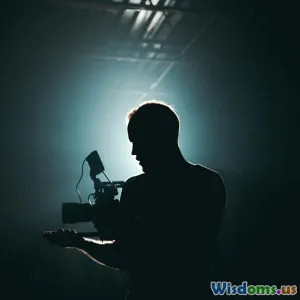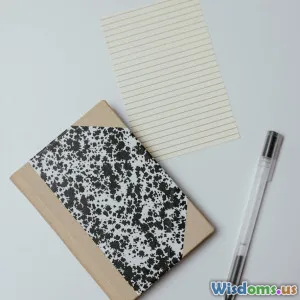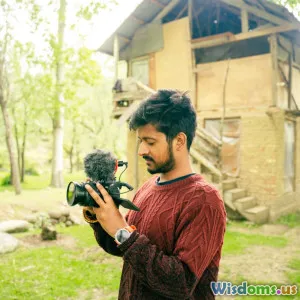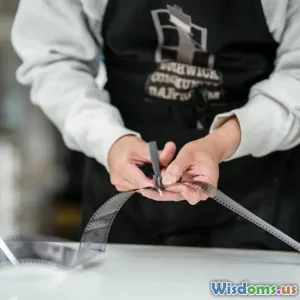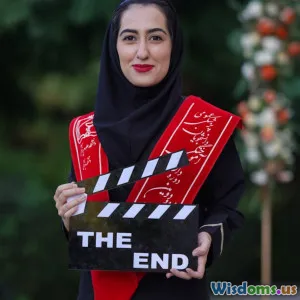
Documentary Filmmaking: Tips for Beginners
8 min read Explore essential tips for beginners in documentary filmmaking to create compelling, authentic, and impactful films. (0 Reviews)
Documentary Filmmaking: Tips for Beginners
Documentary filmmaking is an incredible journey—an opportunity to delve deep into real-world stories and shed light on untold narratives. For beginners, the path might seem daunting, but with the right approach and knowledge, it’s a highly rewarding creative endeavor. If you’ve ever wanted to tell authentic stories through the power of moving images, this guide offers practical tips that will spark your passion and equip you with foundational skills.
Understanding the Core of Documentary Filmmaking
Before reaching for the camera, it’s crucial to grasp what documentary filmmaking truly entails. Unlike fiction films, documentaries capture reality, presenting factual events, people, or phenomena to educate, inspire, or provoke thought. The goal isn’t just to record events but to tell an engaging story with honesty and emotional resonance.
Renowned documentarian Werner Herzog once said, “Documentary is truth 24 frames per second.” This highlights the fine balance between raw truth and crafted storytelling that defines the genre.
Laying the Groundwork: Choose Your Story Wisely
A great documentary starts with a compelling story. Here are steps for beginners to identify and refine their documentary subject:
1. Find Authentic Stories
Look for stories that resonate emotionally or have a unique viewpoint. Real examples include:
- “Free Solo” (2018) that follows climber Alex Honnold’s free solo ascent of El Capitan.
- “13th” (2016), which explores racial inequality and prison reform.
Ask yourself: Is this story meaningful? Does it offer insights others might miss?
2. Conduct Preliminary Research
Research to ensure the story has enough depth and visual elements. Gather background information to anticipate challenges or ethical considerations. For example, documenting vulnerable subjects requires sensitivity and informed consent.
3. Develop Your Angle or Thesis
What’s the unique perspective or question your film addresses? A focused angle helps structure your narrative and retains viewer interest.
From Idea to Execution: Planning and Pre-Production
Good planning can make or break a documentary, especially for newcomers.
1. Create a Treatment or Outline
Draft a written summary of what your film will cover. This includes:
- The story arc
- Key characters or subjects
- Visuals and locations
This document guides your production and is useful for funding or collaboration.
2. Budgeting and Equipment
Documentaries don’t always require expensive gear. Many successful projects use:
- DSLR or mirrorless cameras
- Smartphones with stabilization
- Affordable audio equipment
Estimate your budget and prioritize essentials like sound quality—poor audio often undermines quality more than visuals.
3. Assemble Your Team
Though solo filming is possible, novices benefit from a small team: a camera operator, sound person, and editor. Collaboration can elevate results and reduce burnout.
Capturing Reality: Filming Tips for Beginners
Shooting documentaries demands adaptability and sensitivity.
1. Build Trust With Your Subjects
Spend time establishing rapport. Authenticity requires comfort, and interviews become natural rather than staged. Respect boundaries and maintain transparency about your intentions.
2. Use Natural Light and Environment
Avoid elaborate lighting setups. Film in available light and embrace the environment’s mood. This approach conserves time and preserves authenticity.
3. Frame Thoughtfully
Show variety: close-ups express emotion; wide shots capture context. For example, Ken Burns uses extensive archival images combined with interviews to tell profound historical stories.
4. Capture Ambient Sound
Background sounds contextualize scenes, enhancing immersion—think of street noise in a city documentary or nature sounds in environmental films.
The Art of Storytelling in Editing
Editing transforms raw footage into a compelling narrative.
1. Organize Your Footage
Label clips, transcribe interviews, and create a rough sequence. This lays the foundation for narrative flow.
2. Craft a Narrative Arc
Structure your documentary with a beginning (setup), middle (conflict or exploration), and end (resolution or reflection). If ambiguity is your goal, guide viewers through thoughtful pacing.
3. Use Music and Graphics Judiciously
Appropriate music underlines emotion, but avoid overpowering the story. Graphics can explain complex info clearly, as seen in documentaries like “Inside Job” that use data visualizations effectively.
4. Seek Feedback
Early reviews from peers or subjects can reveal blind spots and improve clarity.
Ethical Considerations in Documentary Filmmaking
Respect and responsibility are paramount:
- Obtain consent and clearly disclose how footage will be used.
- Be mindful of portraying subjects fairly and accurately.
- Avoid manipulation that distorts reality.
Documentarians have influenced governments and social movements; the Helsinki-based documentarian Pirjo Honkasalo asserts, "We have a moral obligation to portray our subjects with integrity."
Inspiring Examples to Learn From
Here are notable documentaries that beginner filmmakers can study:
- “Hoop Dreams” (1994): Intimate storytelling that follows two young basketball players’ journeys.
- “The Cove” (2009): Combines investigative journalism with gripping visuals to expose dolphin hunting in Japan.
- “Finding Vivian Maier” (2013): An exploration of a mysterious street photographer’s life uncovered after her death.
Analyzing these films can illuminate narrative techniques and production choices.
Conclusion: Start Small, Stay Persistent
Documentary filmmaking is a rewarding craft that lets you mirror reality’s complexity with your unique lens. Start with small projects to build skills, embrace challenges as creative opportunities, and always keep the story’s truth at the forefront.
Every great documentary began with a curious mind and a determined filmmaker willing to tell a story that matters. So pick up your camera, plan diligently, and let your vision illuminate a new perspective.
Good luck on your filmmaking journey!
Ready to create your first documentary? Remember: Authentic stories, thoughtful planning, ethical focus, and passionate storytelling unlock the true power of documentary films.
Rate the Post
User Reviews
Popular Posts


















